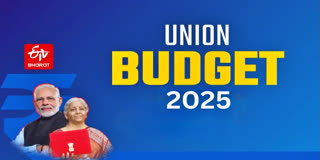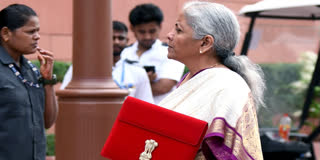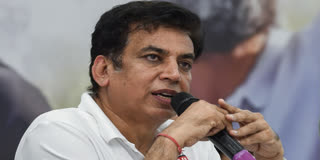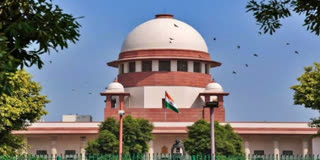Trump, Modi and the Bilateral Relationship
The India-US relations are multidimensional and are growing for the past few decades. There is a large Indian diaspora living in the United States contributing to the people-to-people interactions. The widespread usage of English in India has facilitated better communication between the two countries.
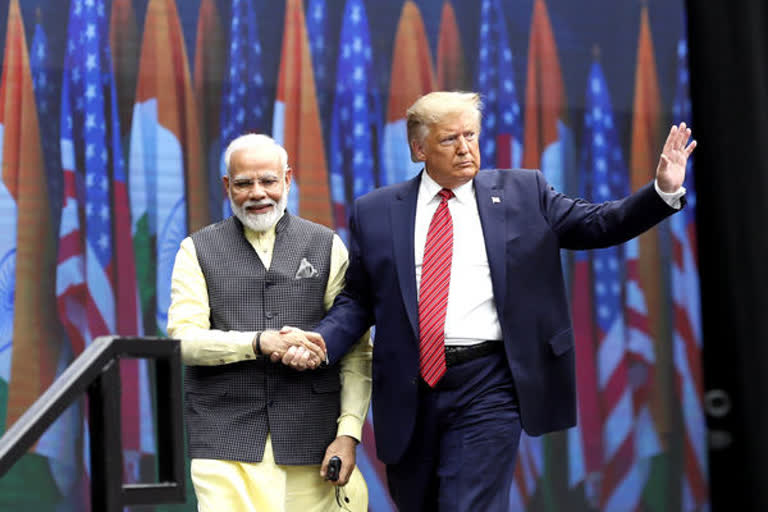
Hyderabad: The US President Donald Trump, accompanied by important family members such as First Lady Melania Trump, daughter Ivanka Trump and son-in-law Jared Kushner had a successful visit to India.
President Donald Trump received a rousing public reception at the roadshow as well as at the Motera stadium in Ahmedabad with people thronging the stadium to greet Prime Minister Modi and President Trump. It should be noted that this is not the first time that an American president received a rousing reception in India. In 1959, when President Eisenhower visited India, he reportedly addressed lakhs of people at the Ramlila Maidan in New Delhi. Therefore, the Motera stadium reception is a continuation of such events that have happened in the past. A few other instances can be recollected such as Prime Minister Modi and President Trump mega rally in Houston and the roadshow that was organized in Ahmedabad when Prime Minister Shinzo Abe visited India in 2017.
Some argue that the uptick in India-US relations is a consequence of a desire to contain China. There may be an element of truth in such an observation. In fact, President Trump in the speech at Motera Stadium (Ahmedabad), stated, “There is all the difference in the world between a nation that seeks power through coercion, intimidation, and aggression, and a nation that rises by setting its people free and unleashing them to chase their dreams.”
Many analysts noted that President Trump is indirectly bringing out the contrast between India and China. However, the scale of India-US bilateral relations cannot be defined merely through the lens of China. It should be noted that India-US relations are multidimensional and are growing for the past few decades even before the rise of China. There is a large Indian diaspora living in the United States contributing to the people-to-people interactions. The widespread usage of English in India has facilitated better communication between the two countries.
Both countries are democracies and have an intuitive understanding of the political constraints and opportunities under which the leadership in both countries work. It is this understanding that has prevented President Trump from commenting on India’s internal issues. For instance, when asked specifically about Citizen Amendment Act, President Trump response was, “I don’t want to discuss that. I want to leave that to India, and hopefully, they’re going to make the right decision for the people. That’s really up to India.”
For India, the United States is the leading trade partner. If we take both services trade as well as goods trade, India-US trade amounted to about $142.6 billion in 2018. While with China, on an average over the past few years, India had approximately $50 billion worth of trade deficit in goods, India has enjoyed sustained trade surplus ($20.8 billion in goods in 2018) with the United States. This quick comparison is sufficient to explain as to why India is keen on scaling up trade relations with the United States. Both countries have been conducting intense negotiations to finalise the free trade agreement (FTA) and the comments by senior leaders during the visit gave an impression it may be concluded soon.
Quite often trade deals tend to succeed if the countries negotiating have dissimilar economies, which is the case with India and the US. The delay in the conclusions of the trade deal is a consequence of many factors. While Trump comes from New York, his political base is in rural America and not industrialized segments or sectors which are located on the eastern and the western coast of the United States. As a consequence, President Trump is interested in big concessions in the agricultural sector from other countries.
For countries such as India, it will be difficult to make concessions in the agricultural and dairy sectors.
Further, President Trump's negotiations style is also a source of the problem. There is a large constituency within the United States which seems to be worried about the relative decline of the United States in global politics. It is precisely to address such emotional requirements within the US society that President Trump came up with the slogan of “Make America Great Again.”
President Trump's domestic compulsions and the need for communicating that he is winning deals on behalf of the United States adds new complexity to trade negotiations. Quite often winning is defined by President Trump as a reduction of the US trade deficit, which is problematic. For instance, the trade deficit that the US has with India ($20.8 billion in trade and $4.4 billion in services) is minuscule with compared to the trade deficit with China ($378 billion in 2018).
However, President Trump treats India and China on the same platform by terming them as protectionist economies. Further, if we take into account the defence procurement, Indian airlines orders with Boeing, and Indian students’ expenditure in the US, then this probably will more than amply cover the US trade deficit with India.
There is growing comfort and trust between Washington and New Delhi, which is prompting the United States to transfer high-tech weapons systems to India. There are discussions about the possibilities of providing India with Integrated Air Defense Weapon System (IADWS) and Sea Guardian armed drones to India.
India already has advanced weapon systems such as P-8I anti-submarine warfare aircraft, C-17 Globemaster, Apache attack choppers, C-130J Super Hercules Transport aircraft, Chinook heavy-lift Helicopters, AN-TPQ weapon locating radars, and M-777 ultra-light howitzers.
During Trump’s visit, the US has agreed to sell MH-60R naval and AH-64E Apache helicopters to India. In spite of increased purchases from the United States, it should be noted that Russia still accounts for almost 60% of India’s defence purchases. It is important for India, in the coming years, to ensure that at least some components of these defence platforms are manufactured in India.
An interesting dimension is a growing convergence between India and the US to ensure that digital infrastructure in both countries is “open, reliable, and secure Internet that facilitates trade and communication.” New Delhi has already permitted trails of Chinese Huwaei 5G network in India. One needs to wait and see if Chinese companies will be actually shortlisted for operationalising 5G networks in India.
Interestingly, during business persons meet, Mukesh Ambani (Reliance Industries Chairman) stated that 'Reliance Jio' is the only network in the world that doesn't have a single Chinese equipment manufacturer for the 5G trials, which was appreciated by President Trump.
In the recent past, many countries in Asia have fallen into debt-trap due to implementation of financially unviable infrastructure projects initiated by China thereby making them vulnerable to external pressures. In order to address such challenges, the India-US Joint Statement issued during the visit stated that “Prime Minister Modi and President Trump expressed interest in the concept of the Blue Dot Network…to promote high-quality trusted standards for global infrastructure development.” The Blue Dot network certifies both physical and digital infrastructure projects on various parameters such as quality, transparency, financial viability and security.
It appears that India, the US and other like-minded countries will work together to prevent various countries in Asia and beyond from implementing unviable infrastructure projects.
In spite of many highs of the Trump visit, there are growing concerns in India with the US policy towards the Taliban. The US has been in Afghanistan for over 19 years and it has very little appetite to stay any longer in that country. President Trump during the press conference in Delhi clearly stated that the US would like to pull out from Afghanistan. In order to have a safe exit, the US has been having a series of conversations with the Taliban. While the US desire to withdraw from Afghanistan is understandable, the growing trend of trying to legitimize the Taliban as a legitimate political actor with valid demands is a source of concern.
A few days ago the US and Taliban have agreed to a “week-long reduction in violence”. If this temporary truce is successful, then reports suggest that there will be a more full-fledged agreement between the two to facilitate the US withdrawal. The re-emergence of the Taliban, with their regressive ideology, as a powerful political player in Afghanistan, does not bode well for India. India has to quickly scale up a relationship with Central Asian countries and other political players in Afghanistan.
As we pause and reflect on President Trump's visit, we must note that it has been 12 years since the India-US nuclear deal was signed. At that time, serious concerns were expressed in many quarters that India would lose its strategic autonomy and the deal will have a negative impact on India’s nuclear programme. None of these concerns have materialised. It is natural to be a little cautious when dealing with big powers.
However, our caution should not translate into uncontrollable anxiety that prevents us from taking legitimate steps to promote our national interests. Thus far, the Indian leadership has demonstrated considerable boldness as well deftness in dealing with big powers. The recent visit of President Trump testifies to a prudent approach of India foreign policy establishment.
* The author, Sanjay Pulipaka, works as a Senior Fellow at the Nehru Memorial Museum and Library, New Delhi. The views expressed here are personal.

